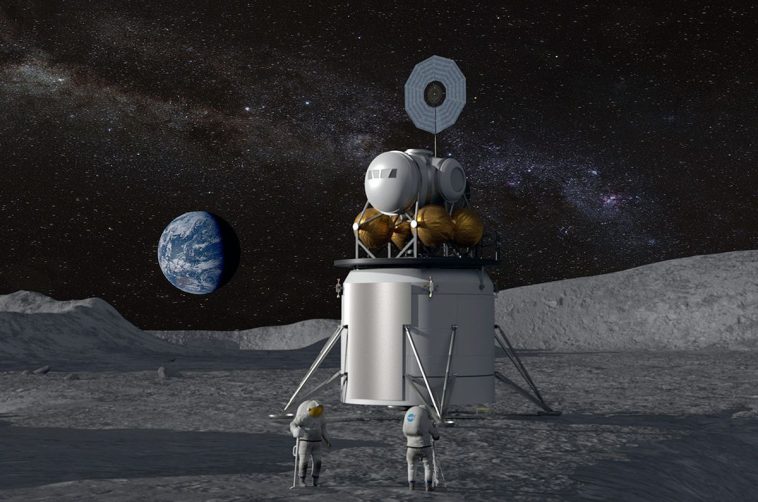The aspiration of mankind to venture beyond the confines of our own planet has already seen us reach the Moon, setting the stage for the logical next adventure: a journey to Mars. A number of state-of-the-art rockets are currently in the development phase, raising the possibility of such interplanetary exploration taking place within our lifetime. With Mars situated a considerable 140 million miles away on average from Earth, the primary challenges of such an endeavour involve the lengthy travel time and significant fuel costs involved.
NASA, the leading organization in space exploration, envisages addressing these challenges through the adoption of nuclear propulsion techniques. In an effort to reduce the round trip time between Earth and Mars to as close to two years as manageable, NASA believes that the integration of space nuclear propulsion systems could be the key. These systems, according to NASA, not only promise a reduction in mission time, but also present a tactical advantage to mission designers, offering increased mission flexibility and efficiency.
In a bid to materialize these ambitious ideas, NASA announced a collaboration with Darpa (Defense Advanced Research Projects Agency) for the construction of a rocket equipped with this cutting-edge technology. Bill Nelson, the chief of NASA, announced that the agency plans to work with Darpa – a longstanding partner, to develop and showcase advanced nuclear thermal propulsion technology by the year 2027.
The key advantage of nuclear thermal rockets, as voiced by NASA, is their superior efficiency, with a potential to be three times more efficient than their chemical propulsion counterparts. This revolutionary technology significantly shortens the travel time to and from deep space missions, making crewed expeditions to Mars far more feasible.
In the commercial space sector, Elon Musk’s SpaceX corporation has also shown a strong interest in Martian travel. Musk, known for his grand ambitions, has expressed dreams of turning humans into a multiplanetary species, prominently aiming for Mars. To achieve this lofty vision, SpaceX has developed a rocket named ‘Starship’.
SpaceX’s Starship is a spacecraft and Super Heavy rocket system that embodies a completely reusable transportation system aiming to shuttle both crew and cargo to Earth’s orbit, the Moon, and Mars. The Starship system is designed to enter the Martian atmosphere at a speed of 7.5km per second, and its robust heat shield promises safe landing on the Martian surface, without succumbing to deterioration.
As per the current status, Starship is undergoing extensive testing regimens, with the seventh flight test scheduled for early 2025. Musk’s master plan includes refilling the Starship spacecraft with fuel while it hovers in low-Earth orbit. This strategy involves launching the spacecraft into space and then topping up its tanks before setting course towards Mars.
Parallel to this, the SLS (Space Launch System) is being primed as the primary launch vehicle for NASA’s ‘Artemis’ programme. The Artemis programme envisions a series of missions aiming to return humans to the lunar surface, marking yet another key development in mankind’s quest to explore the cosmos.
The SLS had its maiden unmanned test flight in November 2022. NASA has provisions to enlist the SLS once again for the crewed Artemis II flight scheduled for April 2026. However, NASA’s long-term vision for the SLS involves more than just lunar missions. There are indeed plans for the SLS to carry humans to Mars as well.
In line with this, the SLS rocket has been engineered to evolve over time, enhancing its capacity and broadening the types of missions it can undertake. This includes crewed missions to the Moon and Mars, along with robotic scientific missions extending to the Moon, Mars, and the outer planets.
NASA maintains that the final configuration of the SLS (Block 2) will provide superior thrust, clocking in at 9.4 million lbs., as compared to Block 1’s 8.8 million lbs. This powerhouse is touted to be the primary transport for sending cargo to the Moon, Mars and even destinations situated deeper in space.
The Block 2 variant of SLS will be able to lift a staggering 46 tons (101,000 lbs.) into deep space, showcasing an impressive increase in payload capacity for deep space endeavors. This is a remarkable indicator of the growing momentum in our quest to explore Mars and beyond.
In short, as we look to the future, both NASA and SpaceX are striving to pioneer efficient technologies that will take us to Mars and beyond. From nuclear propulsion to advanced spacecraft, it is evident that we are indeed living at the dawn of a new era in space travel.


